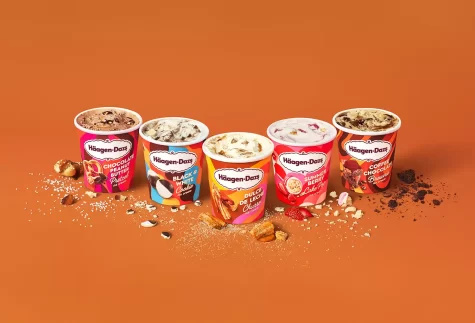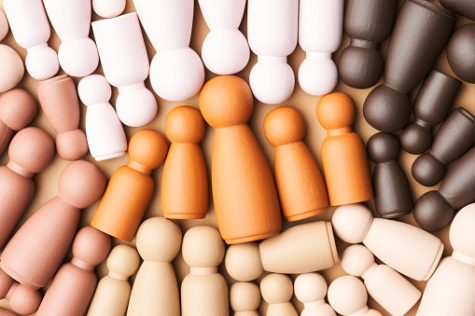COVID Vaccine
Recently, Pfizer has partnered with a German company, BioNTech, to release a coronavirus (COVID-19) vaccine that is more than 90% effective. In order for life to return back to normal, this vaccine has to be effective, approved, available and accessible to everyone.
The Five Phases of Developing a Vaccine
Preclinical Stage
The preclinical stage involves finding the right antigens, natural or synthetic, to react to the immune system to fight off viruses and bacteria. On average, it takes up to four years to find the right antigens for an effective vaccine.
According to Johnson and Johnson’s website, “Our investigational vaccine produces an antigen, or protein, which should cause the body’s immune system to react and get rid of the novel coronavirus,” Dr. Redlich explains.
Phase 1 and 2
Phases 1 and 2 focuses on the development of an experimental vaccine. Which is then later tested out on a small group of healthy adult volunteers. The experimental vaccine was co-developed by scientists at the National Institute of Allergy (NIH) and Infectious Disease (NIAID) and Moderna, a biotech company in Cambridge, Massachusetts. It is called mRNA-1273 and was developed in mid-March.
Phase 3
During this phase, scientists study how effective the vaccine is. In September, the experimental vaccine was tested on thousands of healthy people: half of the people were vaccinated and the other half received a placebo of saltwater. Out of the 44,000 people who were tested, 94 were diagnosed with COVID-19. There are four versions of the vaccine and the one that develops the least side effects will be selected. “Phase 3 trials can sometimes take years. But Janssen hopes to get results much sooner—in a year or less—by creating as large a trial as possible, with up to 60,000 people,” said Johnson and Johnson. The trial is not over yet and will continue until there are at least 164 cases of COVID-19 within their trial population. Making a vaccine takes time because it has to be tested to see if it works and then has to be distributed globally.
Phase 4
At this phase, the vaccine is ready for everyone. In this stage of development, the vaccine is approved and can be distributed in hospitals and clinics worldwide.
Distributing the vaccine is organized into four phases. The first to get the vaccines are essential workers and people of all ages with a high-risk of COVID-19. School staff, child care workers and food supply chain employees will get vaccinated in Phase 2. Phase 3 targets anyone ages 3 or younger. Finally, Phase 4 allows the vaccine to be distributed to everyone else.
Vaccine Distribution
By the end of November, there will be 100,000 boxes distributed and more than double by March 2021.
Pfizer says that out of the 50 million doses that will be distributed worldwide, half will go to the United States. Each person has to take two doses of the vaccine, 21 days apart. If most people take it, 12.5 million Americans will be vaccinated. According to Healthline, “People will be prioritized to finish their series, their two-dose series before you go onto another person because it takes two doses to assure protection”.
The vaccine will be released in December if it is approved for emergency use. It will likely take months for most people to get access to the vaccine in the United States.
Essential workers and high-risk people will be the first to receive the vaccine, most likely by February and March. If all goes according to plan, everyone else should receive the vaccine around the middle or end of next year.
Anti-Vaxxer Pushback
Some people oppose vaccinations for many reasons such as allergic reactions, religious beliefs or the belief that vaccines are ineffective.
Autism, flu vaccines and mistrust of science are the most common reasons for anti-vaccination. The Measles, Mumps and Rubella (MMR) vaccine is used for preventing mumps, measles and rubella and many scientists believe it can be effective against COVID-19. According to Healthline, “Multiple studies have shown that the MMR vaccine does not cause autism. Most of these studies had large sample sizes.” Thimerosal is a preservative used in flu vaccines that are mercury-based and falsely believed by some to cause autism.
Some anti-vaxxers believe that flu vaccines are ineffective since it may not prevent you from every type of flu, needs to be taken every year and may cause some mild side effects, causing you to think you are sick, which is not true.
Another opposition to vaccines is a lack of trust in science or the government. “Others are skeptical of science that they don’t understand, or the chemicals they don’t know that go into vaccines. This distrust grows, as laws require children to be vaccinated in order to attend public schools,” Healthline said. Instead of vaccines, anti-vaxxers may take some natural treatments that are not as effective as the vaccine.
In conclusion, even if you get vaccinated, you can’t stop wearing your mask because it will take some time for the whole population to get vaccinated. There won’t be an effective vaccine until next year. Once everyone gets vaccinated, the world will be immune to COVID-19 and life will return to normal.











